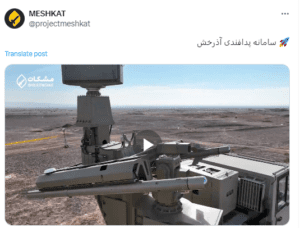In recent weeks, tensions between Iran and Israel have escalated to a concerning level, with threats of military action looming large on the horizon. As both nations exchange heated rhetoric and warnings, the question arises: How well could Iran defend itself against a potential Israeli attack?
Iran, a country with a rich history and a complex geopolitical landscape, has invested significantly in its defense capabilities over the years. Faced with regional instability and the looming threat of external aggression, Iran has made strategic moves to bolster its military preparedness, particularly in the realm of missile defense.
One of Iran’s key strengths lies in its emphasis on local defense capabilities. Stemming from the bitter experience of the Iran-Iraq War, during which Iran faced aggression from a coalition of foreign powers backing Saddam Hussein’s regime, Tehran has prioritized self-sufficiency in both its economy and military. This focus on indigenous development has seen Iran build a diverse array of defensive arms, including missile defense systems, to safeguard its sovereignty.

Iran’s air superiority has historically been challenged, owing partly to decades of sanctions and reliance on outdated equipment. While some of its fighter jets date back to before the 1979 revolution, Iran has sought to compensate for this with a focus on missile technology. The locally-developed Bavar-373 system, touted as comparable to advanced Russian systems like the S-400, stands as a testament to Iran’s progress in this arena.
Moreover, Iran’s defense strategy extends beyond mere hardware. The country has strategically dispersed its military assets, burying airbases and key facilities deep within mountains to shield them from potential airstrikes. This decentralized approach adds layers of complexity for any potential aggressor, enhancing Iran’s resilience in the face of attack.
Iran’s missile defense network comprises a variety of systems, ranging from long-range batteries like the Bavar-373 to medium and short-range systems designed to provide layered protection. This multi-tiered approach aims to create overlapping zones of defense, ensuring that even if one layer is breached, subsequent layers can still intercept incoming threats.
Furthermore, Iran has demonstrated resilience in the face of unconventional warfare tactics, such as cyberattacks and sabotage. Despite facing numerous incidents of sabotage and cyber intrusions, Iran has shown a capacity to adapt and strengthen its defenses. The establishment of the National Organization for Passive Defense underscores Iran’s commitment to countering these threats, with a focus on enhancing cybersecurity measures to thwart potential attacks.
However, it’s crucial to acknowledge the challenges Iran faces. While its defense capabilities have undoubtedly advanced, they are not without limitations. The efficacy of Iran’s defense systems in a real-world scenario remains untested, with much of the available information based on military exercises and simulations. Additionally, the asymmetrical nature of modern warfare means that traditional measures of military strength may not fully capture Iran’s ability to deter aggression.
As tensions continue to simmer in the region, it’s imperative for all parties involved to exercise restraint and prioritize dialogue over confrontation. A military escalation would undoubtedly result in catastrophic consequences for the entire region, with ripple effects felt globally. Instead, diplomatic channels must be pursued to address grievances and resolve conflicts peacefully.
In conclusion, while Iran has made significant strides in bolstering its defense capabilities, the prospect of a potential Israeli attack presents a complex and multifaceted challenge. Iran’s emphasis on indigenous development, coupled with a diverse array of missile defense systems, provides a formidable deterrent against external aggression. However, the path to lasting peace and stability lies not in military posturing, but in dialogue, cooperation, and mutual respect among nations.
















